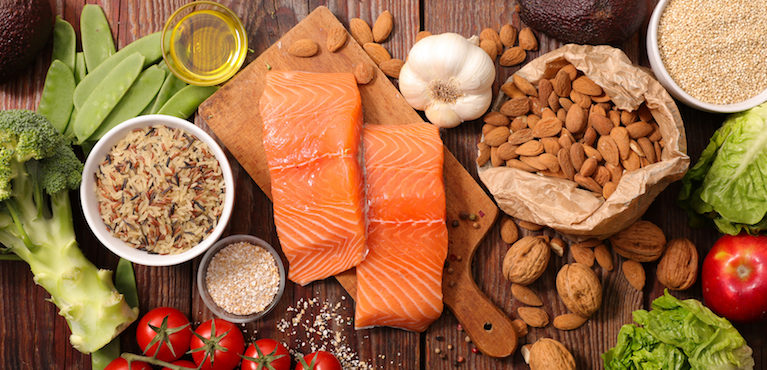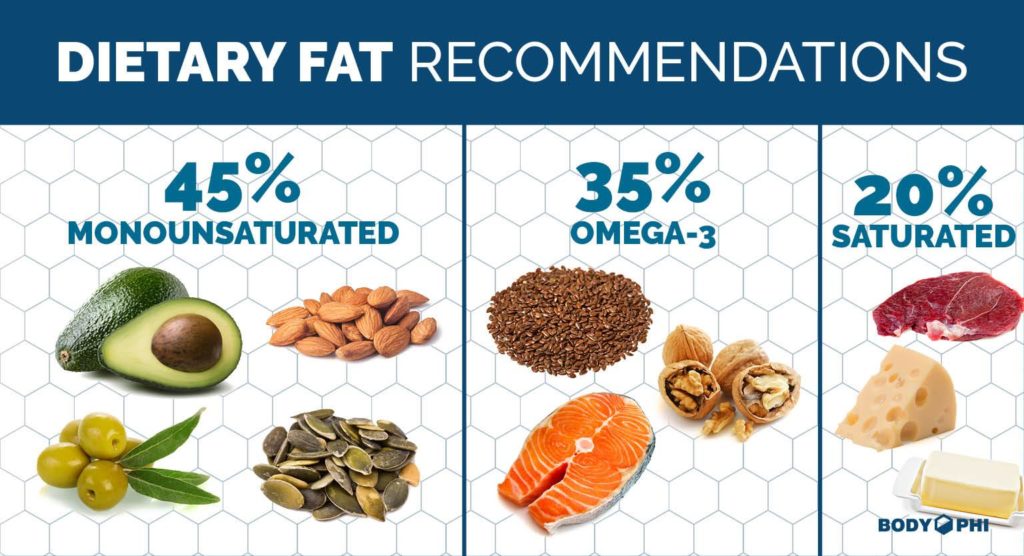Ski Instructor Training – Nutrition: Fats
Ski Instructor Education – Nutrition: Fats
Fats
Fats are a group of fatty acids, some of which are essential to the diet for health and wellbeing. Various types and structures have different roles to play, in the same way as proteins and carbohydrates do. The main purpose of fatty acids are in the formation of cell membranes, in particular nervous tissue, as a part of the biochemical reactions inside cells and as a dietary source of energy.
The Geeky Science Bit
Fats are made up of fatty acids and glycerol in various formations. The main one stored in the body is triacylglycerols (triglycerides) in which three fatty acids are bonded to a glycerol molecule3. The position of the fatty acids on the glycerol molecule as well as the type will determine its characteristics; digestibility, melting point etc.
A fatty acid is made up of a chain of carbon atoms, with a methyl group at one end and an acid group at the other which is the part that bonds to the glycerol.
When we start to talk about saturated or unsaturated fats, we are referring to the number of hydrogen atoms bonded with the carbon atoms within the fatty acid. If all of the carbons have the full number of hydrogen atoms it can bond to it is called saturated, i.e. it can not hold any more. An unsaturated fatty acid has double bonds between carbon atoms which will alter the reactivity of the molecule.
Fatty acids with one double carbon bond are monounsaturated fatty acids, more than one double carbon bond are polyunsaturated fatty acids.
Fats as a Nutrient
1g of fat provides 37.7 kJ (9 kcal) 5.
To give a reference, 1g carbohydrate provides 16.7 kJ (4 kcal), 1g of protein provides 16.7 kJ (4 kcal), 1g of fat provides 37.7 kJ (9 kcal) as specified by WHO, 2004
The body can make all the fatty acids it needs apart from two; linolenic acid (omega-6) and alpha linolenic acid (omega-3). They are referred to as essential fatty acids in the same way as there are essential amino acids in proteins that must be consumed in the diet as the body can’t produce them. From these two acids the body makes make eicosapentaenoic acid (EPA) and docosahexaenoic acid (DHA) but both can be found in the diet also. Oily fish, eggs and some meats are good sources.
Signalling molecules that control cell function are derived from the essential fatty acids and those that are synthesised from them by the body.
Fats in the Diet
Approximately 35% of the calorific intake of the average adult should come from fats, and no more than 11% from saturated fats.
The National Diet and Nutrition Survey of adults shows that in 2015, the average daily intake of fat was 78.8g (35% of energy intake) for men and 60.1g (34.4%) for women. The recommended intake is a little lower, as defined in the table below.
| Women | Men | |
| Energy (Calories) | 2000 | 2500 |
| Fat (g) | 70 | 95 |
| Saturated fat (g) | 20 | 30 |

Unsaturated fat composition
Fats Classification
A fat is classified based on the proportions of fatty acids present, as all sources of fat in the diet contain both saturated and unsaturated, so it depends on which type is more prevalent.
An unsaturated fat is generally liquid at room temperature and typically come from vegetable sources and saturates are solid and come from animal sources, though there are always exceptions to the general rule. Hydrogenation can be one of these exceptions where hydrogen atoms bond to the double carbon bonds within the molecule and leads to a more solid fat at room temperature, and where trans fatty acids can be formed.
Trans fatty acids are present in milk, beef and lamb but can also be produced during the processing of oils. The concern over trans fatty acids are that they have a similar effect on the body that saturated fats do by raising the blood LDL cholesterol but also reduce the HDL cholesterol and so are more damaging than saturated fats.
Food industries are now finding alternative ways of processing oils. Sometimes they are labelled as partially hydrogenated, to reduce the amount of trans fatty acids due to the significant health concerns of cholesterol effects and influencing cardiovascular diseases.
|
Sources of unsaturated fats |
Sources of saturated fats1 |
|
|

Fats, Cholesterol, LDLs and HDLs
When discussing fats in relation to the diet it is key to discuss what LDLs and HDLs are, what they mean and how they affect our health. Both fats and cholesterol are lipids and are found in the blood in the form of lipoproteins. Lipoproteins are determined based on the amount of lipid in ratio to the amount of protein. With higher levels of lipid to protein being the lower density molecules, and therefore called LDLs.
- LDL = low density lipoprotein
- HDL – high density lipoprotein
- LDL cholesterol is sometimes referred to as ‘bad’ cholesterol as it contributes to fatty build-ups in arteries (atherosclerosis) which in turn raise the risk for heart attack, stroke and peripheral artery disease4.
- HDL cholesterol is the ‘good’ cholesterol. Good HDL cholesterol levels may protect against heart attack and stroke. Studies show low levels of HDL cholesterol increase the risk of heart disease.
The liver is central to the regulation of cholesterol levels in the body as it synthesises the cholesterol for use by other cells. It works on a negative feedback loop. In the same way insulin works on a negative feedback loop where one change in levels drives a reaction, which drives another reaction etc. Increased cholesterol in a hepatocyte leads to decreased activity of HMG-CoA reductase, the rate-limiting enzyme in cholesterol synthesis5. The HDLs collect cholesterol from the bloodstream and to the liver where it’s recycled into bile acids and eliminated from the body or used to digest fats6.

Ski Instructor Training Nutrition: Fats – IASI Coaching Theory Module
Return to the IASI Coach Theory page.
References
https://www.verywell.com/difference-between-saturated-fats-and-unsaturated-fats-697517
http://www.bodyphi.com/dietary-fat-101/
https://courses.washington.edu/conj/bess/cholesterol/liver.html
http://healthyeating.sfgate.com/connection-between-hdl-ldl-fats-9580.html